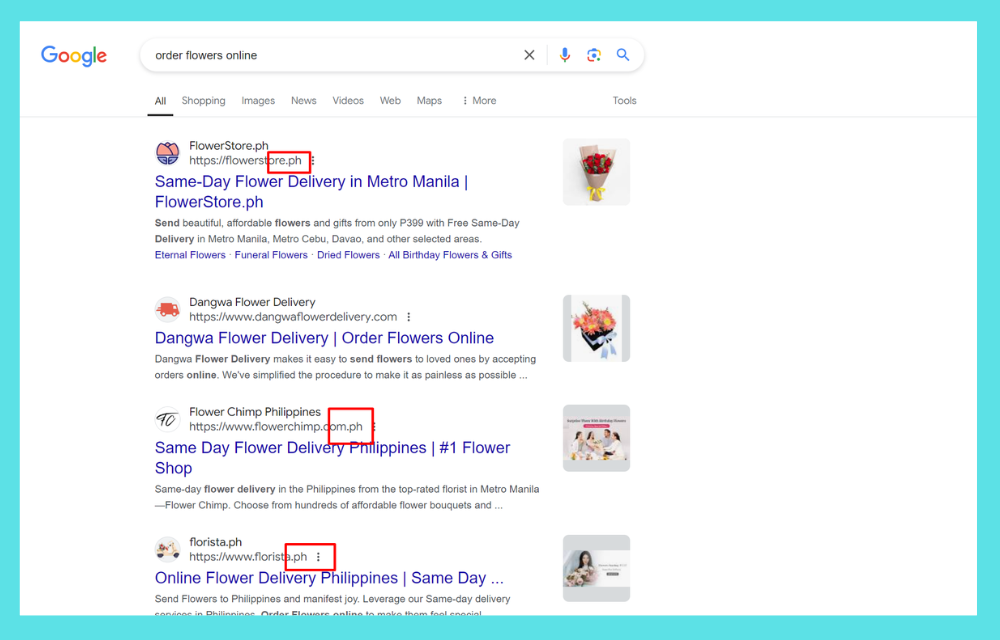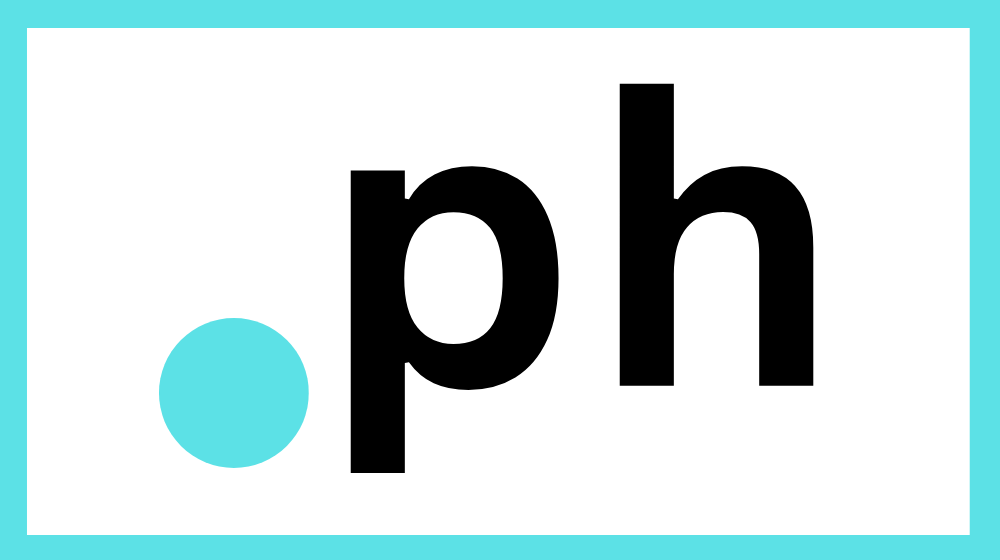The .ph domain extension is the go-to choice for anyone looking to establish a solid online presence in the Philippines. Just like .uk for the United Kingdom or .au for Australia, .ph serves as the Philippines' country code top-level domain (ccTLD).
This makes it perfect for businesses, organizations, or individuals wanting to connect with Filipino audiences. Whether you’re a local startup or an international brand entering the market, using a .ph domain can help boost your credibility and show your commitment to the local community.
In this guide, we’ll look at the history and development of .ph domain and see how it stacks up against other ccTLDs globally. You'll get tips on selecting the best domain name for your website. You'll also learn how a .ph extension can enhance your visibility in search engines. We’ll explore current trends and future prospects for .ph domains and how they fit into the broader digital landscape.
So, whether you’re planning to launch a new website or strengthen your brand’s online presence in the Philippines, this guide has got you covered!
What is .ph domain extension?
A .com.ph or .ph domain is a domain extension that represents commercial entities within the Philippines. It is a country code second-level domain (ccSLD) under the .ph country code top-level domain (ccTLD).
A .ph domain is the country code top-level domain (ccTLD) for the Philippines, similar to how .uk is for the United Kingdom and .au is for Australia. It's used by individuals and entities who want to establish an online presence connected to the Philippines.
History and development of the .ph domain extension
The .ph domain was established in 1990 and delegated to the Philippines as its official country code top-level domain (ccTLD).
Over the years, .ph has grown to become a prominent choice for local businesses and entities with a presence in the Philippines.
It is managed by dotPH, a private company that has overseen its development and administration. Significant milestones include the early adoption of modern domain registration practices, making it accessible to a wider audience, and its increasing popularity for international companies targeting the Philippine market.
How to choose the right domain name for your website in the Philippines?
Choosing the right domain name for your website in the Philippines requires careful consideration of several factors. Start by ensuring that your domain name is memorable, short, and easy to spell.
Use GoDaddy’s free AI domain name generator to save you the headache of spending endless hours on the simple task of choosing a domain name.
Incorporating keywords related to your business or location can also help improve your website's visibility in search engines. If your target market is local, a .ph extension enhances credibility and local relevance. Make sure to avoid using hyphens or numbers, as they can be confusing. Finally, always check for trademark conflicts to avoid legal issues in the future.
Who can register a .ph domain?
Both local and foreign entities can register a .ph domain. There are no restrictions based on nationality or residence. However, certain documentation may be required to verify the identity or legitimacy of the registrant.
Common Use Cases for .ph Domains - Why use a .ph domain extension?
Here are some ways you can, and should the .ph domain extension.
1. International Search Engine Optimization (SEO)

When it comes to a local and an international SEO strategy, using a .ph domain extension can be advantageous. For businesses or individuals targeting the Philippine market, they’ll receive a slight SEO boost. In fact, US-based agency GA Agency published a study revealing that 56% of the top three rankings on local search engine results pages (SERPs) are held by ccTLDs.

Even when I looked up “order flowers online” on the Philippine SERP, three out of four of the top spots were taken up by .ph domains.
That said, one should be mindful to not over-rely on ccTLDs for their local and international SEO strategy. When referencing the SEO boost owners of .ph domain owners receive, Gary Illyes, an Analyst on the Google Search Team, said that “I think eventually, like in years’ time, that will also fade away.”
Google seems to be hinting at devaluing ccTLDs as a ‘ranking signal’. So if you’re going to leverage the status quo to get that sweet sweet SEO boost, better do it while you can.
2. Doing business in the Philippines
A .ph domain is also a strategic choice for businesses looking to establish or expand their presence in the Philippines. This is because it signals a strong local connection and builds trust among Filipino consumers.
Use the .ph ccTLD for your business’s website to gain an upper hand when establishing an online presence in the Philippines.
It’s particularly beneficial for companies operating in sectors like e-commerce stores for trendy products, finance, or real estate, where trust and local relevance are crucial.
Whether you're an international brand entering the market or a local business reinforcing your connection to the region, a .ph domain can make it easier for customers to recognize your services as tailored to Filipino audiences.
Moreover, anyone—individuals, businesses, or organizations—can register a .ph domain, regardless of their location. This flexibility makes it an ideal option for entities targeting the Philippine market, as it helps establish credibility and a local presence.
Related post: How to start and register a business in the Philippines?
How much is a .ph domain?
The exact cost of a .ph domain can vary depending on the registrar. However, prices typically range from $50 to $70 per year.
Why is .ph domain expensive?
The .ph domain might be considered more expensive compared to other TLDs due to the cost of maintaining the infrastructure and administration of the .ph registry by the Philippine Network Foundation (PHNET), which is a non-profit organization.
On top of that, the demand for .ph domains is high but the supply is relatively low. This is because there are fewer .ph domains available compared to more common domain extensions like .com or .org.
Future outlook for .ph domains
The outlook for .ph domains is promising as more businesses in the Philippines embrace digital growth and seek to establish a credible online presence. With the rise of e-commerce and digital services, .ph domains are becoming more popular among local and international companies aiming to connect with Filipino audiences.
As part of the broader digital landscape, .ph domains can enhance visibility in local searches and demonstrate a commitment to the Philippine market. This makes them an appealing choice for businesses looking to build a strong regional identity and capitalize on local consumer trust.
Whether you’re a business looking to expand into the Philippine market or just somebody who wants to run a site and target a Filipino audience, GoDaddy has the right .ph domain just for you.
Secure your .ph domain with GoDaddy today!
FAQs about .ph domain name
What is the length limitation for this domain extension?
A .ph domain name can be between 2 and 63 characters long.
How do I transfer a .ph domain name to a different registrar?
A: To transfer a .ph domain to a different registrar, you should first unlock the domain at your current registrar, then obtain an authorization code (also known as EPP code). You can then initiate the transfer at the new registrar using this code.
Can foreign entities register a .ph domain name?
A: Yes, foreign entities can register a .ph domain name.
How do I renew my .ph domain registration?
A: To renew your .ph domain registration, you will need to go through your domain registrar. They will usually provide instructions and options for renewing your domain, which can typically be done online. This usually involves logging into your account, selecting the domain you want to renew, and paying the renewal fee. Be sure to renew your domain before it expires to avoid any interruption to your website. It's also advisable to set up automatic renewal to avoid forgetting to renew and losing your domain.
How do ccTLDs like .ph work?
Country code top-level domains (ccTLDs) like .ph (Philippine domain) function by using a network of nameservers to direct internet traffic to specific web addresses. When a user types in a ccTLD-based website, the request is routed through a series of nameservers that identify the location of the domain’s web hosting server.
Service providers play a crucial role in managing these domains by offering registration and ensuring that the nameservers are configured correctly. For businesses targeting local markets, using a ccTLD like .ph can boost visibility and credibility, as it signals a strong connection to the region.
What is the difference between a .com and .ph domain?
The main difference between a .com and a .ph domain is their target audience and scope. A .com domain is a global, generic top-level domain (gTLD) commonly used worldwide, suitable for businesses with an international reach.
In contrast, a .ph domain is a country-code top-level domain (ccTLD) specific to the Philippines. This makes it ideal for businesses or individuals focusing on the local Philippine market. Using a .ph domain can enhance local trust and potentially improve search visibility within the Philippines.









